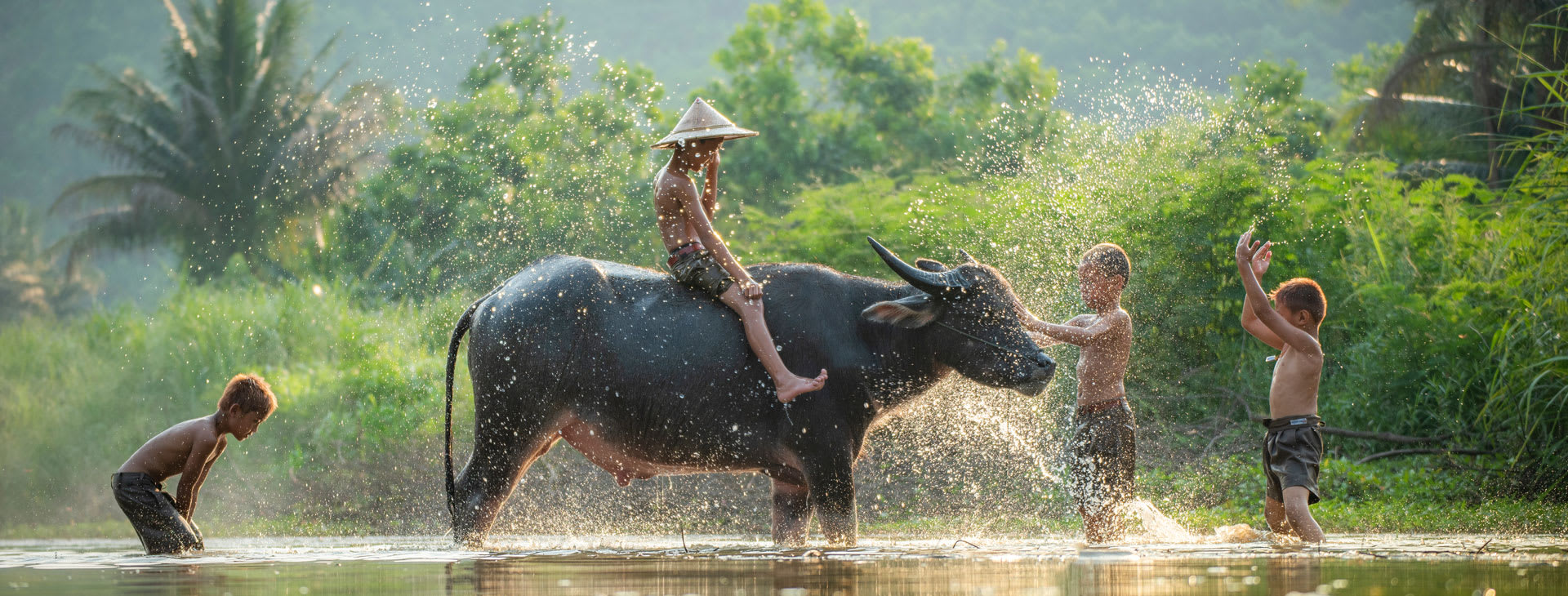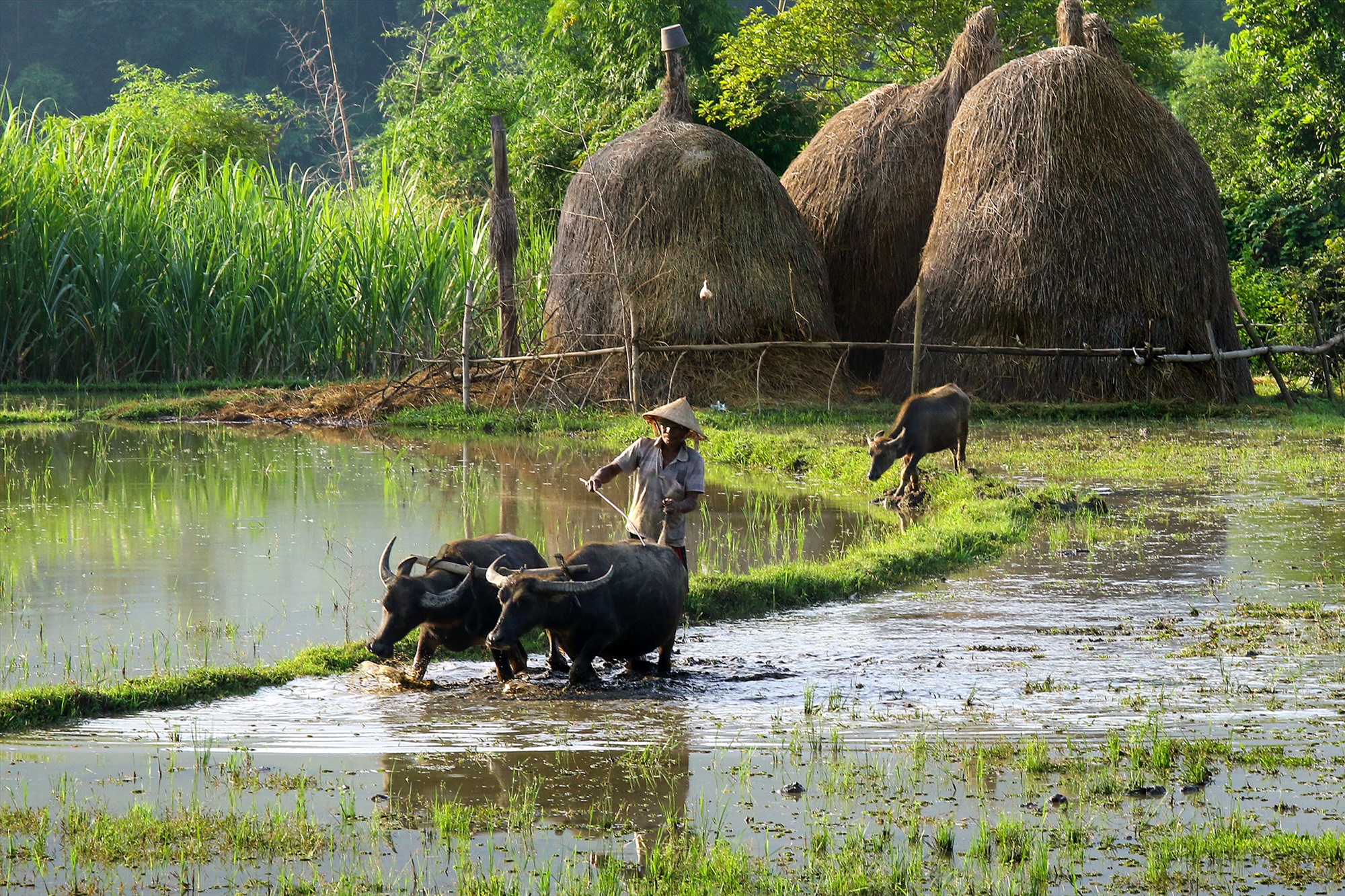The water buffalo is the national animal of Vietnam. We will take you through an exploration of its cultural significance, offering valuable insights and unveiling surprising facts.
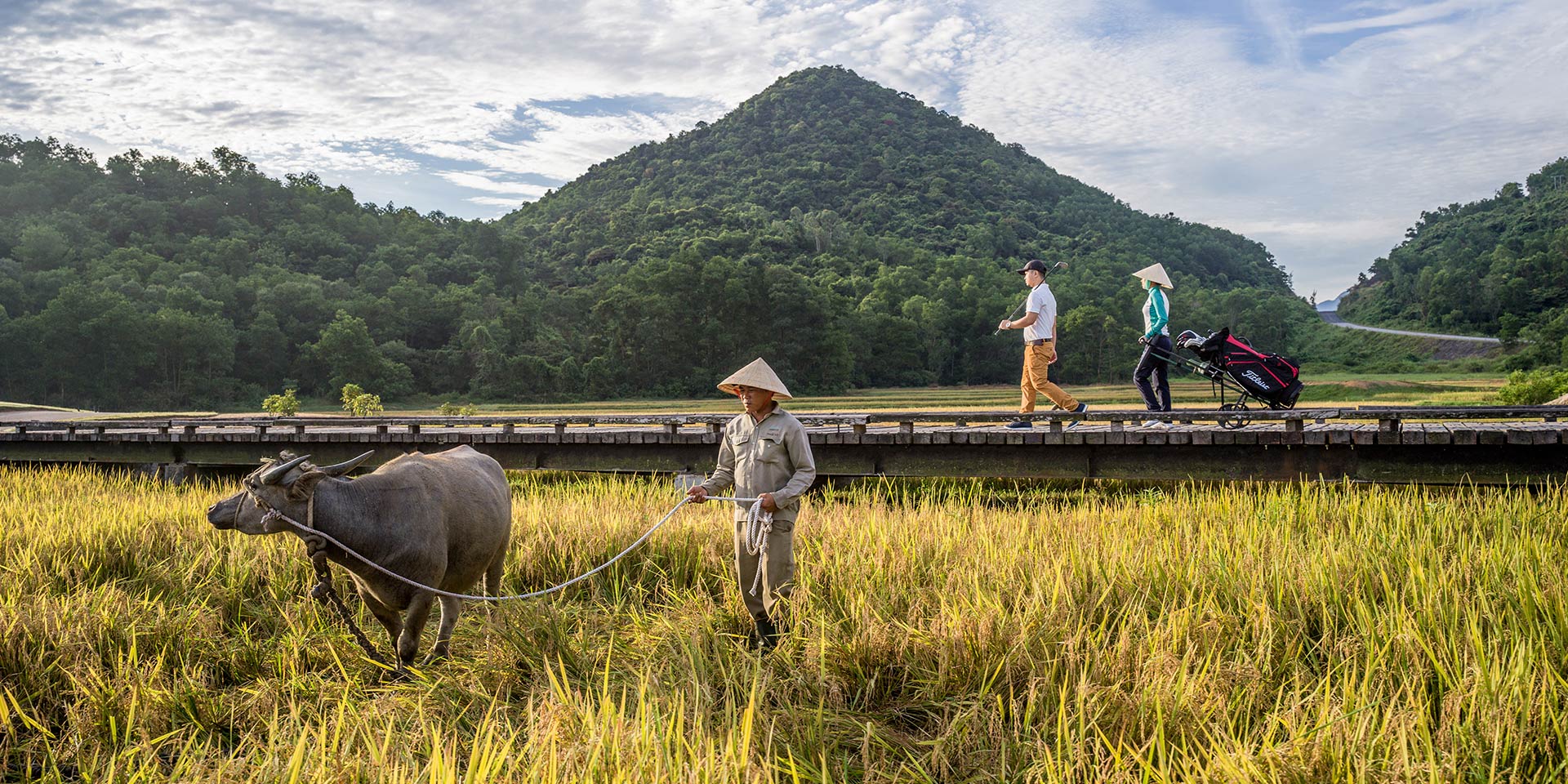
Vietnamese animals make up an integral part of the country’s natural allure. Among these animals, the water buffalo holds a special place in Vietnamese culture. Throughout generations, it has been a trusted companion to farmers and an integral part of various cultural events. Join us as we explore this special creature, not only as a national symbol but also as a source of cultural pride for the people of Vietnam.
1. Cultural insights into the domestic water buffalo
1.1. Water buffalo in the culture of Asian countries

The domestic water buffalo holds significant cultural value in various countries in Asia, particularly in Southeast Asia and East Asia. Here are some insights into its cultural significance in specific countries:
- China: In Chinese culture, the buffalo symbolizes the strength of farmers and is associated with fertile lands and abundant harvests. In rural areas, Chinese farmers have a unique tradition of welcoming the new year by creating clay buffalo statues and smashing them to celebrate the coming farming season. The buffalo is also considered auspicious in feng shui, believed to bring good luck and fulfill wishes.
- South Korea: The buffalo holds a strong presence in Korean culture, particularly through proverbs and sayings. The images of water buffalo are associated with positive values such as compassion, perseverance, and loyalty, due to their long-standing connection with humans. Many ancient stories depict families having to sell their buffalo to pay for their children’s education, highlighting the buffalo’s significance as the most valuable asset for farmers.
- Japan: Over time, the image of the water buffalo has become important in Japanese culture. It has been depicted in poetry and sculpture dating back centuries. Apart from its artistic aspects, this Asian water buffalo is also a religious symbol, is worshiped and celebrated on various festive occasions. In Japanese culture, the buffalo is closely linked to Buddhism.
- Indonesia: The domestic water buffalo has deep cultural roots in this country. It is considered a symbol of wealth, strength, fertility, and agricultural prosperity. In rural areas, the buffaloes are used for farming activities and are highly valued by farmers as essential working animals.
1.2. Water buffalo in Vietnamese culture
1.2.1. Meaning of the water buffalo in Vietnamese culture
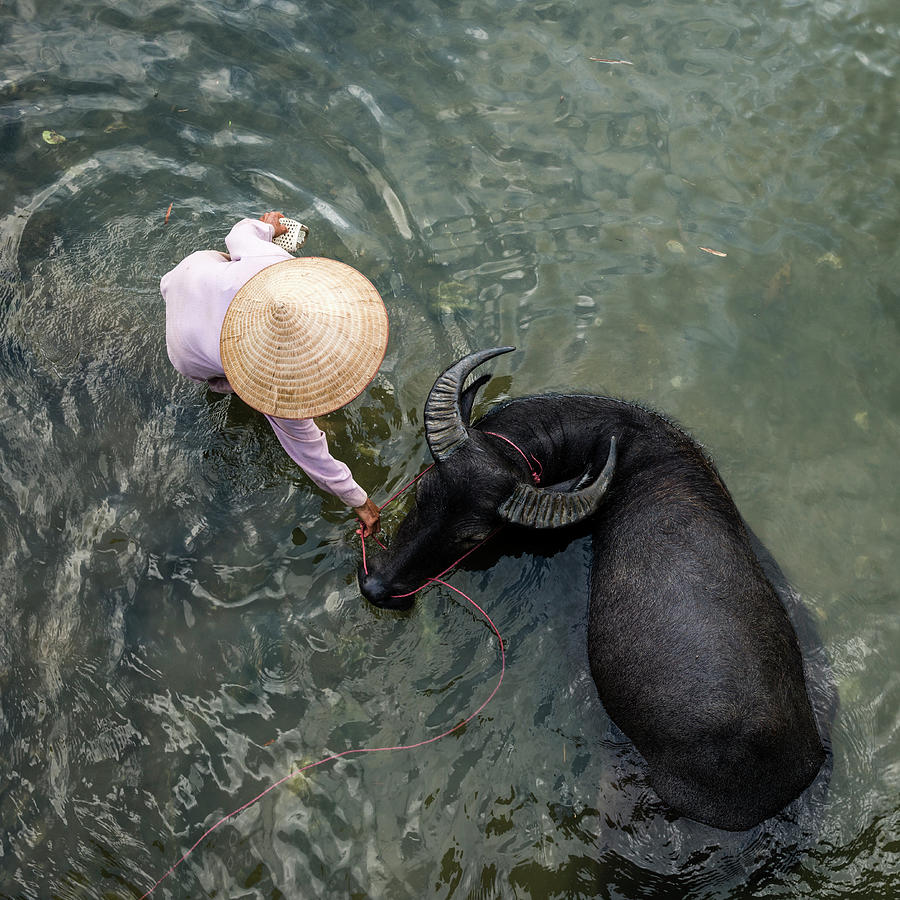
The water buffalo holds great significance in Vietnamese culture. It has been an inseparable companion to Vietnamese people for thousands of years, faithfully accompanying farmers in their work across lush paddy fields. Since the time of the Hung Kings, the water buffalo has played a fundamental role in establishing Vietnam’s agricultural civilization. It has been instrumental in cultivating rice and sustaining the nation.
The discovery of clay buffalo statues at the Dong Dau archaeological site, which dates back over three thousand years, serves as a testament to its enduring presence. The buffalo is prominently depicted in ancient Bac Ly bronze drums, which showcase traditional buffalo fighting. It also holds a sacred place in some folk festivals, where it serves as a symbolic sacrificial object, reflecting deeply-rooted agricultural beliefs.
The iconic image of water buffalo extends to various forms of Vietnamese art, including the renowned Dong Ho folk paintings. These paintings often portray scenes of children herding buffaloes, playing flutes, or flying kites. Esteemed Vietnamese artists like Nguyen Sang, Nguyen Tu Nghiem, and Bui Xuan Phai have also incorporated the buffalo into their works, further immortalizing its significance.
Moreover, the water buffalo is featured prominently in Vietnamese literature, appearing in proverbs, fairy tales, and legends. Proverbs such as “con trau la dau co nghiep” (every business starts with a buffalo), “Lam ruong khong trau, lam giau khong thoc” (Farming without a buffalo is like geting rich without a penny), and “Tau trau, lay vo, lam nha” (Buy a buffalo first, find a wife second, build a home last) vividly express the importance of the buffalo in the lives of farmers.
1.2.2. Cultural activities related to the Vietnamese water buffalo
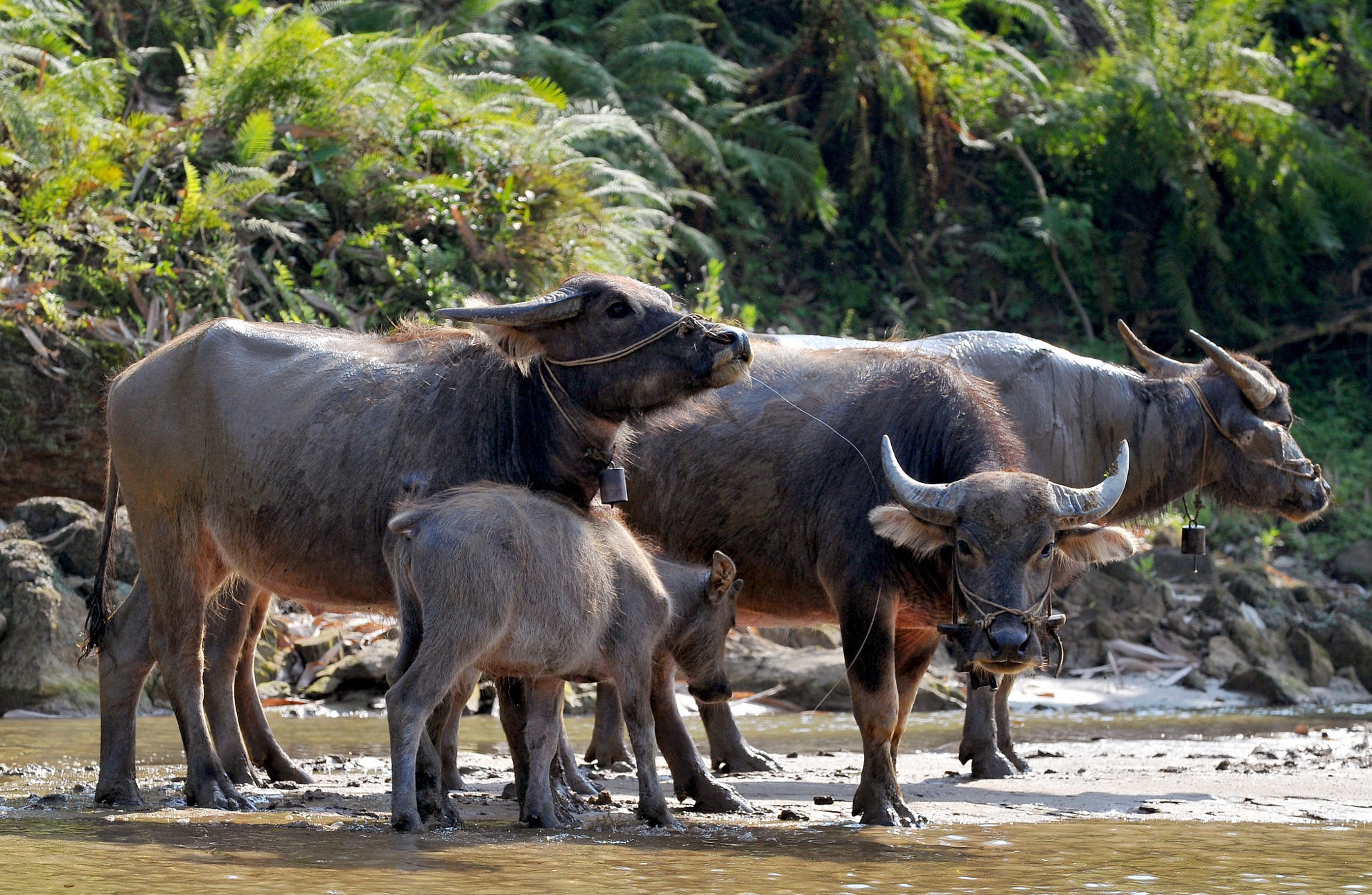
The water buffalo in Vietnam is involved in many cultural activities, such as:
- Water buffalo fighting festivals: Water buffalo fighting festivals are traditional events held in various regions of Vietnam. These festivals showcase the strength and agility of buffaloes as they engage in combat. One notable festival is the Do Son Buffalo Fighting Festival in Hai Phong. These events attract spectators who gather to witness the spectacle and cheer for their favorite buffalo.
- Tet Trau (Buffalo Tet): Tet Trau is a cultural celebration that takes place during the Lunar New Year in some rural areas of Northern Vietnam. It is a time when the buffaloes are bathed and their stables are cleaned. The farmers arrange offerings including fruits, traditional cakes such as banh chung and banh tet, incense, and lanterns to worship the deities of the land, the god of harvest, etc. They seek blessings for the well-being, prosperity, and good health of the buffaloes in the new year. After the rituals, families will roll banh tet in fresh grass for the buffaloes to eat.
- Water buffalo tours: In Hoi An, Vietnam, there are opportunities for tourists to partake in water buffalo tours. These tours provide visitors with a chance to experience the daily life of farmers, learn about traditional farming methods, and even participate in activities such as plowing fields alongside water buffaloes. For an immersive cultural experience, you should not miss out on these tours on your Vietnam travel.
2. Fun facts about the Vietnamese water buffalo
2.1. Water buffalo stands second in the 12-year cycle of the Vietnamese zodiac
In the Vietnamese zodiac, which follows a 12-year cycle, each year is associated with a specific animal sign. The buffalo holds the second position, symbolizing traits such as honesty, hard work, and determination.
2.2. Water buffalo can weigh up to one thousand kilograms
According to records in Asian biology books, the Central Highlands in Vietnam is one of the few remaining habitats of wild buffaloes. They can have a body length of 3-3.5 meters, a height ranging from 1.5 to 1.8 meters, and weigh between 800 and 1,100 kilograms. On the other hand, domestic water buffaloes are generally smaller in size, measuring around 2.5-3 meters in length, 1.3-1.5 meters in height, and weighing between 600 and 800 kilograms.
2.3. Water buffalo is widely considered as the national animal of Vietnam
The water buffalo holds a special place in the hearts of Vietnamese people and is often regarded as the national animal of Vietnam. Its agricultural significance and strong cultural association have contributed to its national symbolism.
2.4. Water buffalo’s skin is believed to bring good luck
In Vietnamese culture, the way the water buffalo’s hair grows on its skin is considered significant. A symmetrical pattern on the buffalo’s skin is believed to bring good luck, prosperity, and good health.
2.5. Water buffalo is a great source of nutrients
Water buffalo meat is an important component of Vietnamese cuisine and is used in a variety of dishes such as “thit trau nuong” (grilled buffalo meat), “thit trau gac bep” (smoked buffalo meat), “thit trau nhung me” (buffalo meat cooked with fermented rice), and “nom da trau” (buffalo skin salad). It is highly valued for its taste and nutritional value, as it is rich in protein and essential nutrients. Additionally, buffalo milk is used to make traditional dairy products like yogurt and cheese, further highlighting the nutritional benefits of the buffalo.
